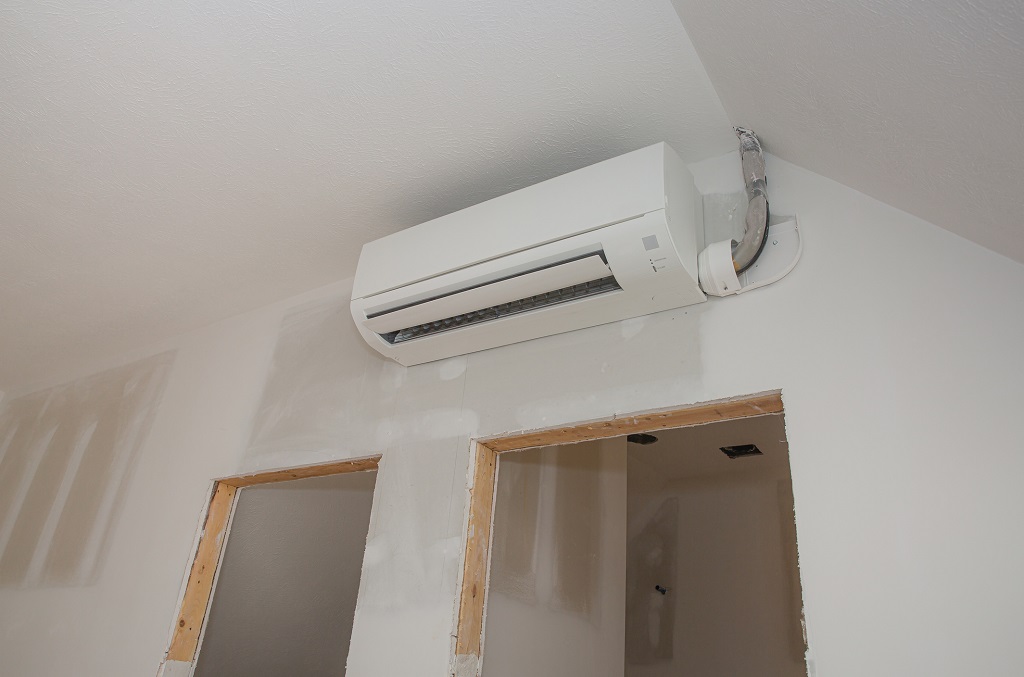Ductless Mini-Split vs. Traditional HVAC: Which is Right for Your Home?
When it comes to keeping your home comfortable year-round, the choice between a ductless mini-split system and traditional HVAC can feel like a climate control conundrum. Each option offers distinct advantages and potential drawbacks, depending on your home’s layout, your comfort preferences, and energy efficiency goals. Understanding the key differences between these systems can help you make an informed decision that suits your household’s requirements. Let’s explore the world of home heating and cooling to determine which system might be the perfect fit for your cozy abode.

The Duct-Free Dynamo: Ductless Mini-Split Systems
Ductless mini-split systems are the new kids on the block in the HVAC world, offering a flexible and efficient approach to climate control. These systems consist of an outdoor compressor unit connected to one or multiple indoor air handlers, linked by a small conduit. Think of it as a climate control spy network, with sleek indoor units discreetly mounted on walls or ceilings, ready to spring into action at a moment’s notice.
Zone Defense: Customized Comfort
One of the standout features of ductless mini-splits is their ability to create personalized temperature zones throughout your home. Each indoor unit can be controlled independently, allowing you to cool your bedroom while keeping the living room toasty, or vice versa. It’s like having a climate concierge for each room, catering to individual preferences without wasting energy on unoccupied spaces.
The Energy Efficiency All-Star
Ductless systems often boast impressive energy efficiency ratings, thanks in part to their lack of ductwork. Traditional HVAC systems can lose up to 30% of their energy through leaky or poorly insulated ducts. Mini-splits sidestep this issue entirely, delivering conditioned air directly where it’s needed. It’s like sending your comfort via express mail instead of routing it through a maze of leaky pipes.
The Installation Easy Street
For homes without existing ductwork, mini-splits can be a game-changer. Installation typically involves creating a small hole in the wall for the conduit, causing minimal disruption to your home. This makes them ideal for older homes, additions, or spaces where installing ductwork would be impractical or costly. Think of it as giving your home a climate control upgrade without the need for major surgery.
The Traditional Titan: Centralized HVAC Systems
Central HVAC systems have long been the go-to choice for whole-home comfort, using a network of ducts to distribute conditioned air throughout your house. These systems are like the reliable family sedans of the HVAC world – they might lack the flash of newer options, but they get the job done with tried-and-true efficiency.
Whole-Home Harmony
One of the primary advantages of traditional HVAC is its ability to maintain consistent temperatures throughout your entire home. This can be particularly appealing in open-concept houses or for those who prefer uniform comfort from room to room. It’s like having a maestro conducting a symphony of perfect temperatures across your living spaces.
The Hidden Hero
Central HVAC systems often win points for aesthetics, as most of the equipment is tucked away out of sight. With only vents visible in each room, these systems can blend seamlessly into your home’s decor. It’s the Clark Kent of climate control – powerful, yet unassuming in appearance.
The Filtration Station
Traditional HVAC systems can incorporate whole-home air filtration and purification systems, potentially improving indoor air quality throughout your entire house. This can be a significant advantage for allergy sufferers or those concerned about air quality. Think of it as giving your home’s air a spa treatment every time it circulates.
The Cost Consideration Carousel
Initial installation costs can vary widely between ductless and traditional systems, depending on your home’s existing infrastructure. Homes with pre-existing ductwork might find traditional HVAC more cost-effective upfront, while those requiring new duct installation might lean towards the ductless option. Long-term energy savings should also factor into your decision, as ductless systems often edge out in efficiency.
The Climate Crystal Ball: Future-Proofing Your Comfort
Consider your long-term plans when choosing between ductless and traditional systems. If you anticipate additions to your home or changing comfort needs, the flexibility of ductless mini-splits might be appealing. On the other hand, if you value whole-home consistency and have the infrastructure in place, a traditional system could be your best bet.
Silco Plumbing: Your Climate Control Confidants
Choosing between a ductless mini-split and traditional HVAC system is a significant decision that can impact your comfort and energy bills for years to come. At Silco Plumbing, we understand the nuances of both systems and can help guide you to the best choice for your home. Serving Stoneham, MA and the surrounding cities, our skilled professionals can assess your home’s specific requirements, discuss your comfort preferences, and recommend the ideal heating and cooling solution.
Take control of your home’s climate! Give Silco Plumbing a call at 781-438-8925 or visit our website to schedule a consultation. Let’s work together to create the perfect temperature harmony in your home, whether through the zoned precision of ductless mini-splits or the whole-home consistency of traditional HVAC. Your comfort oasis awaits!

